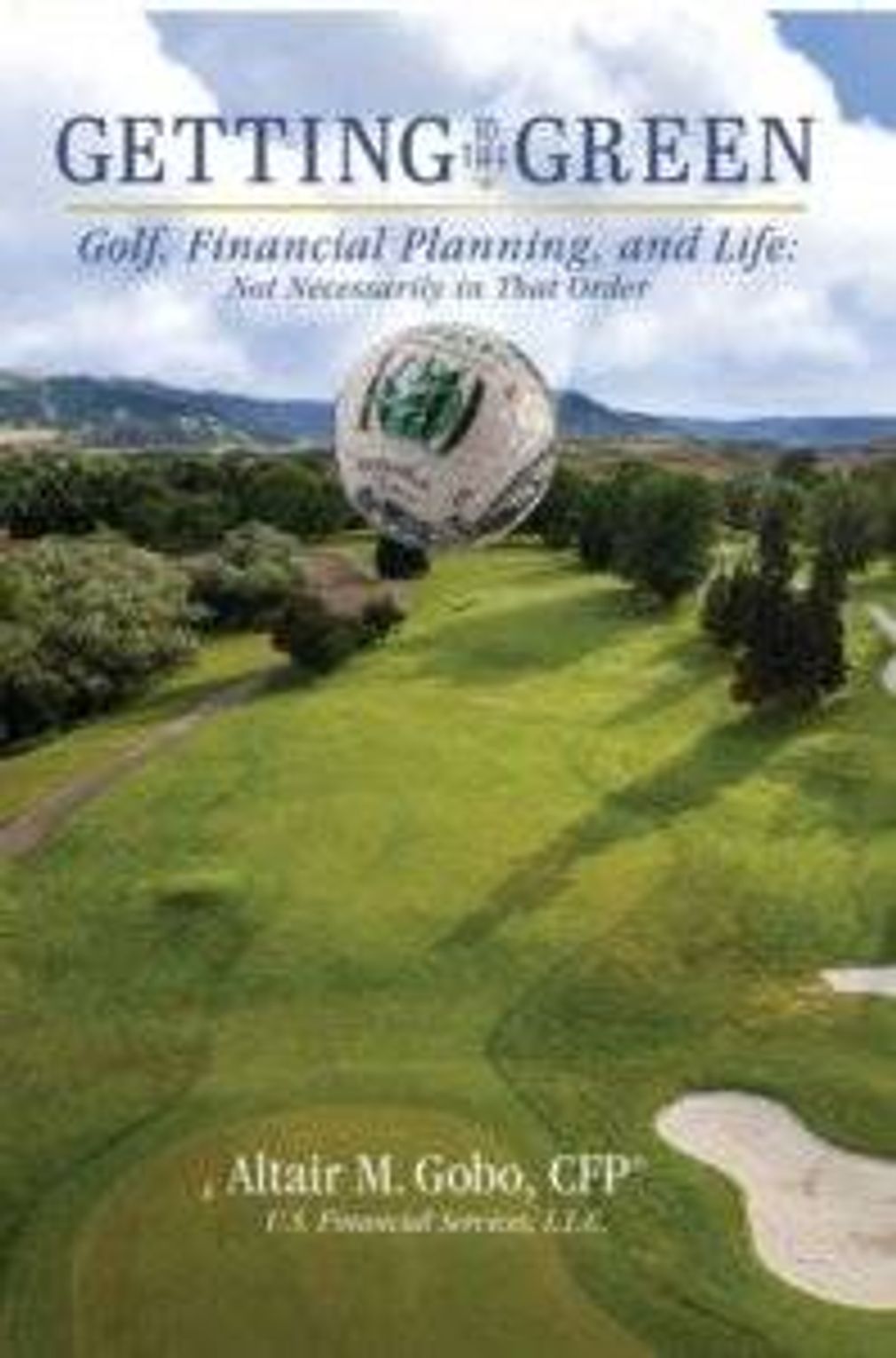To Manage Your Money Better, Think Like a Golfer
Advice from financial planner Altair Gobo, author of 'Getting to the Green'
When boomers gather, there’s a pretty good chance that two topics of conversation will be their portfolios and their putting. Now, a financial adviser and avid golfer has found a way to link them and has written a useful personal-finance book about it.

In Getting to the Green: Golf, Financial Planning and Life, Not Necessarily in That Order, Altair M. Gobo, a Certified Financial Planner and partner at U.S. Financial Services in Fairfield, N.J., points out how lessons learned on the course can be applied in investing — and, maybe, vice versa.
As a frequent golfer and someone looking to better my own financial game, I spoke with Gobo recently and asked him to share some money-management tips. (Incidentally, Gobo told me his handicap in 2017 went up to a 19. “I took one lesson this year and I never made time to practice,” he said. Full disclosure: My handicap is 22.)
Highlights from our conversation about what golf can teach us about managing money:

Next Avenue: What are the main similarities between playing golf and investing?
Altair Gobo: It’s been said many times that golf is a microcosm of life. Golf has many challenges. Some we cannot control, like the weather. Some we can sort of control, like hazards. There’s risk: Do you try to get it over that pond on a 200-yard shot or do you lay up, hitting it short but safely to set up your next shot?
There’s diversification: You don’t have a bag full of nine irons. You get 14 clubs that do different things. You can apply that to wealth management: You don’t have a portfolio full of just CDs or high-end stocks — you diversify.
And in both golf and investing, you have to remain flexible. You start with a game plan and if something’s not working out, you need to change that plan.
There’s an element of what in golf we call ‘course management.’
Right. That starts with understanding your strengths and weaknesses, setting expectations that are realistic. I cannot hit the ball 300 yards; I know that. Likewise, someone with $10,000 who has a plan to have a million dollars by the end of the year — that’s not realistic.
I know a guy who’s close to a 30 handicap. He just stinks, but he does nothing to improve. He’ll hit the most terrible shot in the world and he slams his club down and says, ‘Do you believe it?’ And I’ll be in the back snickering and saying, ‘Of course I believe it! You hit the same shot every day! And you do nothing to improve! So why do you think you’ll start hitting better shots today?’
Same in financial planning. If you don’t develop a cash flow, a budget, spending habits and saving habits, how can you expect to accumulate money?
Talk about the role of the pro in both disciplines.
When I started playing golf, I tried to get better on my own. One day it dawned on me: This wasn’t going to work. So I had my first lesson with a pro. He started with the grip, then changed where the ball was in my stance. I was gripping the club too hard, swinging too hard, swinging too fast.
Same thing in financial planning. As financial planners, it’s our job to sit down with the client and see what’s realistic and what’s important.
You write about choosing your shots carefully in golf and money management, especially in the decision-making. In golf, after a bad tee shot, you’re often faced with the choice of trying to hit the ball forward in the little opening between the trees — risking even worse trouble — or taking your medicine and knocking it sideways to the fairway where you’ll have a clean shot.
That’s right. It’s about risk and reward.
In golf, I might hit the one-in-a-million shot and get through those 15 trees and land on the green. Whereas if I chip out to the fairway, I’m definitely not going make it to the green, but I’m guaranteed to get out safely and maybe my third shot is on the green. In investing, it’s the exact same thing. If you want to get the potential reward of a portfolio that’s 100 percent invested in stocks and you’re willing to take that risk, fine.
In both, you have to sit there and decide: What’s my worst outcome? For me, I’m always looking for a safe bailout position, where I might not be on the green, but at least I’m not in the pond.
That’s called having a good golf IQ. It’s the same thing when you’re investing. How many people by accident just developed a portfolio? In some cases, believe it or not, it works out OK. It’s like hitting that three-wood and you skull it and somehow it gets to the green.
What’s referred to as ‘a good miss.’
A good miss! I got to the green because of some element of luck. Same thing with those portfolios. But most people don’t want to depend on luck — they want to have a strategy.
You also write about something that’s very important in both disciplines: ‘Know when to lay up.’

Without a doubt!! A distance of 200 yards to the green is not the same every single time. If I have 200 yards right up the middle with no distraction, no hazard, I’m going for it. If I have 200 yards with sand on the left or right, a hazard in the middle — wow, now I have to think. I have to hit the perfect shot to get there.
In the market we have now, where [indicators seem] to be green every day, I have people telling me, ‘We should be more aggressive.’ I’m saying, ‘More aggressive? The market’s at its height and I’m not sure what it’s going to do. Why don’t we take it slow?’
I’m like a caddie saying, ‘Do you really want to try to get over the water? And if you do want to give it a shot, you have to gauge the consequence if you miss.’
You talk about the importance of remaining flexible. It changes a lot as we get older.
That’s why God invented Advil! Mental flexibility and emotional flexibility are critical.
One difference is, in finance, you don’t get mulligans — the do-overs where you can decide not to use your bad first shot.
In financial planning, you kind of do get mulligans. If you have five investments and one of them does badly, you have the four others that may have done just as well or better. So you do have the chance to temper the sting of that loss.
It’s like being on the tee box and choosing to mark on the scorecard only the best of your five tee shots.
You got it! And imagine if you only get one shot, where would you put your money? Well, you don’t only get one shot. You get multiple places to put money today.
Finding places to put money is the easiest thing in the world. It’s getting to that decision of where you’ll put it that’s difficult and that’s what takes time.
Same thing with golf equipment. Today, Callaway, Titleist, Ping — every year they want to sell you the new and improved: the Big Bertha. The bigger Big Bertha! There’s always something out there you can purchase.
So very often we feel that if we have the best equipment that will change our lives. Very often that’s not the case. Same thing with investing. We feel that if we have that one stock, that will change our lives. But there’s enough information that shows that it’s not the one investment, it’s the design of the portfolio that did it.
Do you have one final piece of advice for all of us golfing investors?
When people ask me to autograph their books, I write, ‘True success is measured by family, friends and that occasional great round of golf.’
Well, for me, two out of three is good…I haven’t had that third one yet.
[Laughs] OK, I might change that to “…family, friends and that occasional great shot.”
That works!

